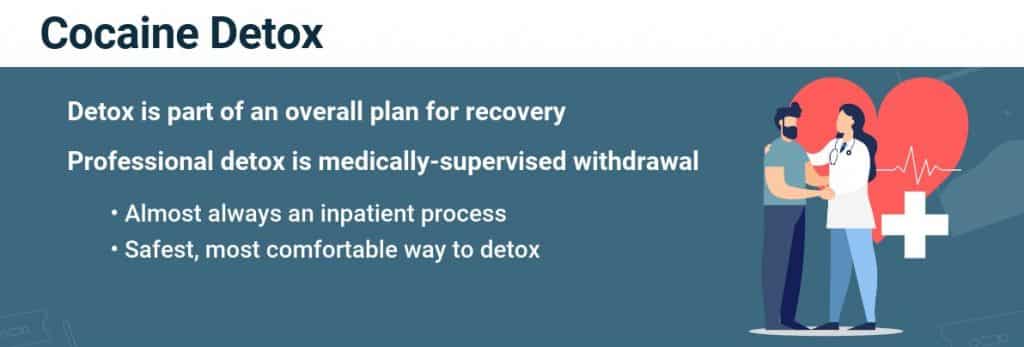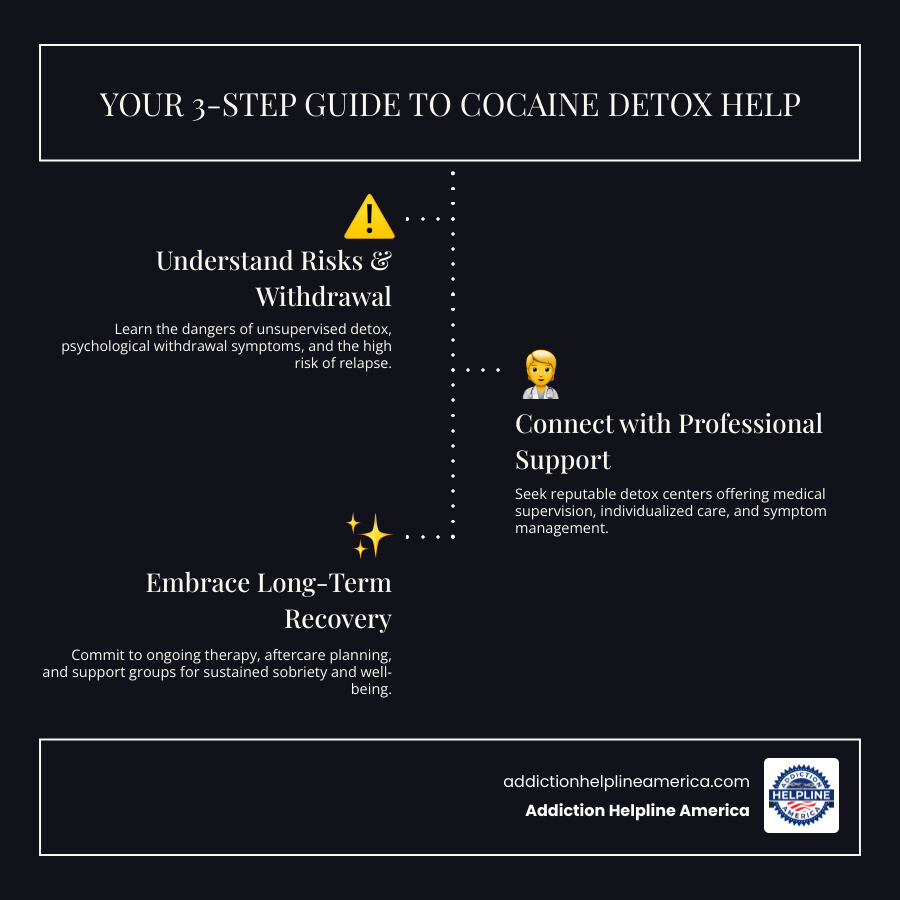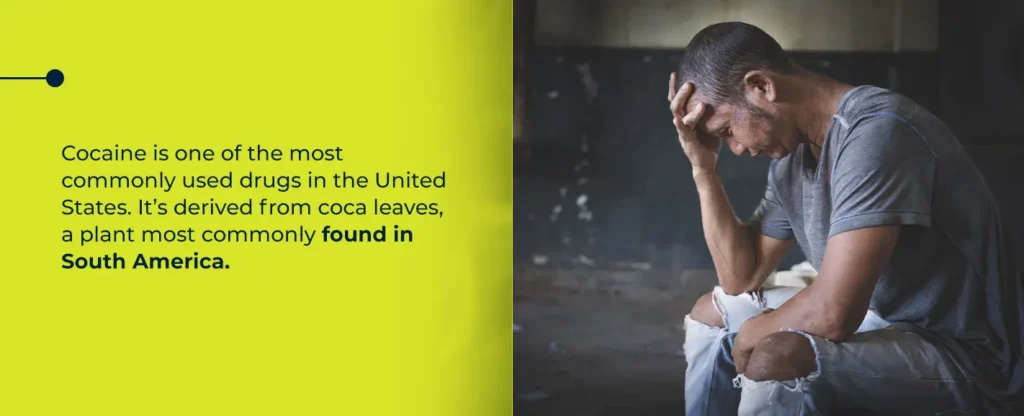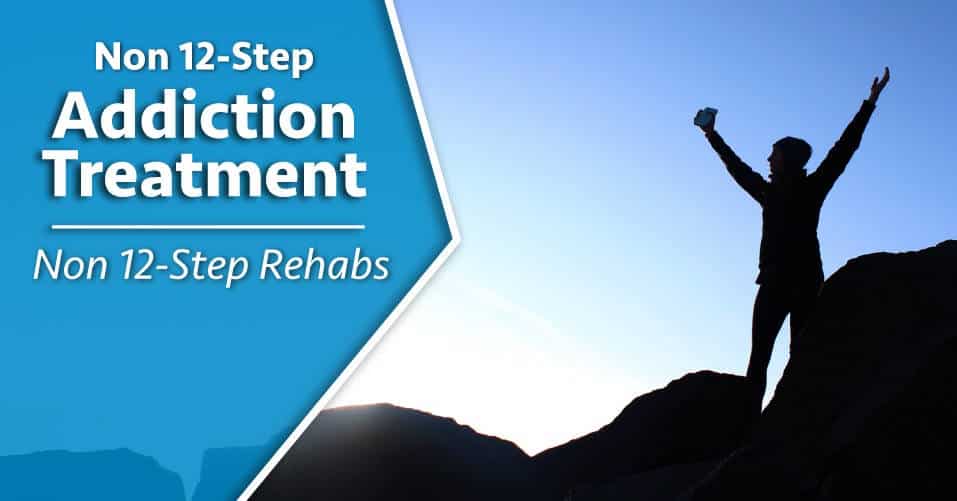
Understanding Cocaine Detox: Your First Step to Recovery
Detox for cocaine is the critical first step in overcoming cocaine addiction, where your body clears the drug from your system and begins to readjust to functioning without it. Here’s what you need to know:
Quick Facts About Cocaine Detox:
- Timeline: Withdrawal symptoms typically begin within 12-24 hours and last 7-10 days for acute symptoms
- Symptoms: Primarily psychological (depression, anxiety, intense cravings, fatigue) rather than physical
- Safety: While not typically life-threatening, medical supervision is crucial due to risks of severe depression and suicidal thoughts
- Next Steps: Detox alone is not enough—ongoing treatment and therapy are essential for lasting recovery
If you or someone you love is dealing with cocaine use disorder, you might feel overwhelmed and unsure where to turn. The reality is that cocaine withdrawal often has no visible physical symptoms like the vomiting and shaking that accompany withdrawal from alcohol, but the psychological dependence can last for years. That’s why attempting to quit alone is both difficult and potentially dangerous.
The good news? Recovery is absolutely possible with the right support and professional guidance.
At Addiction Helpline America, we’ve helped thousands of individuals and families steer the challenging path of detox for cocaine and long-term recovery through compassionate, confidential support and connections to evidence-based treatment programs. This guide will walk you through three essential steps to getting the help you need.

Step 1: Understand the Risks of Unsupervised Detox & Withdrawal
Deciding to stop using cocaine is brave. But what comes next can catch you off guard if you’re not prepared.
When someone stops using cocaine, their brain and body go into what’s often called a “cocaine crash.” This isn’t just feeling tired—it’s your brain struggling to function normally after being flooded with artificial dopamine for so long. Cocaine creates intense euphoria by hijacking your brain’s reward system. When the drug disappears, your brain suddenly can’t produce enough dopamine on its own, leaving you feeling depleted, exhausted, and empty.
Here’s something important to understand: detox for cocaine looks different from other drug withdrawals. You won’t typically experience the dramatic physical symptoms like vomiting or shaking that come with alcohol or opioid withdrawal. But don’t let that fool you into thinking it’s easier or safer to do alone.
The psychological symptoms can be absolutely overwhelming—and in some cases, genuinely dangerous. Depression can become so severe that suicide becomes a real risk. The relapse rate for people trying to quit without professional support is heartbreakingly high, often because the psychological pain becomes unbearable. This is why medical supervision isn’t just recommended—it’s often medically necessary.

The Dangers of Attempting Detox Alone
Let’s talk about something you might have seen online: those “DIY cocaine detox kits” that promise quick fixes and claim they’ll help you pass drug tests. We need to be direct with you—these products are not your solution. They’re ineffective, potentially dangerous, and can lead to serious consequences.
These unregulated kits make bold claims about “cleansing your system” or altering drug test results through various methods. But here’s the truth: they’re not FDA-approved, which means nobody is verifying what’s actually in them or whether they’re safe. The ingredients are often unknown, and mixing these mystery substances with whatever else is in your body can create dangerous health risks.
Beyond the immediate health dangers, using these kits can create severe legal problems. If you’re facing court-ordered drug testing, tampering with results can lead to criminal charges or probation violations. Living in a sober facility? Getting caught with these kits can mean immediate expulsion—losing the very support system you need most.
Your energy and resources are far better spent finding a quality inpatient facility that can help you safely withdraw from cocaine and build a genuine foundation for recovery. That’s real help, not false promises in a bottle. For guidance on finding the right facility, explore more info about medical detox.
Cocaine Withdrawal: Symptoms and Timeline
Cocaine withdrawal is primarily a psychological battle, though it unfolds in your body too. Symptoms typically start within 12-24 hours of your last use, often beginning with that initial crash we mentioned.
What might you experience? Profound fatigue that makes even simple tasks feel impossible. Depression that goes beyond normal sadness—it’s an intense hopelessness and an inability to feel pleasure from anything (called anhedonia). You might feel anxious and restless, experiencing panic or nervousness that seems to come from nowhere. Cravings can be overwhelming, pulling at you with surprising intensity.
Many people experience agitation and irritability, finding themselves snapping at loved ones or feeling angry without clear reason. Some develop paranoia, becoming suspicious and distrustful. Your appetite often increases dramatically, especially for carbohydrates. Sleep becomes disrupted—you might sleep too much or too little, and when you do sleep, you may have vivid nightmares. Concentration becomes difficult, your thoughts slow down, and you might experience general physical aches and discomfort.
The withdrawal process unfolds in distinct phases:
The Crash Phase hits first, starting within 20 minutes to an hour after your last use. The first 12-24 hours are usually the most intense. You’ll likely feel extreme exhaustion, irritability, anxiety, and that profound inability to feel pleasure. Interestingly, cravings might actually be low during this phase because your brain is so depleted. This crash can last one to two weeks.
Acute Withdrawal follows, sometimes called the “craving phase.” This is when intense cravings emerge, typically peaking within the first 12-24 hours of this phase and continuing for up to 10 weeks. You’ll likely experience mood swings, severe depression, sleep disturbances, and agitation. Any physical symptoms usually fade within a few days, but the psychological dependence? That sticks around much longer.
The Extinction Phase is what some call protracted withdrawal or Post-Acute Withdrawal Syndrome (PAWS). After the first 10-12 weeks, most physical cravings should largely disappear. But some people continue experiencing symptoms—most commonly anxiety and depression—for weeks, months, or even more than a year. These symptoms might be constant or come and go, including brain fog, fatigue, and that ongoing struggle to feel pleasure.
Understanding these phases helps you know what to expect. You’re not imagining things, and you’re not weak if withdrawal feels harder than you anticipated. This is simply how cocaine affects the brain.
Key Predictors and Complications of Severe Withdrawal
Here’s what makes detox for cocaine genuinely dangerous: while it’s not typically life-threatening in the physical sense like alcohol withdrawal can be, the psychological risks are very real and very serious.
The primary dangers are profound depression, paranoia, and a dramatically increased risk of suicide. Cocaine disrupts your brain’s dopamine pathways so severely that when it’s gone, you can feel utterly hopeless. This isn’t just feeling sad—it’s a level of dysphoria that can become unbearable. This heightened emotional vulnerability also increases the risk of overdose if someone relapses, desperately trying to escape their symptoms.
Research has identified specific factors that predict who will have the most severe withdrawal experience. A study examining cocaine withdrawal found that beyond typical drug use patterns, psychosocial factors play a huge role. How severe your withdrawal symptoms are at the very beginning of detox often predicts how challenging the entire process will be. In other words, if things start rough, they’re likely to stay rough without proper support.
Childhood maltreatment significantly influences withdrawal severity. People who experienced emotional abuse, neglect, or sexual abuse as children tend to have much more severe withdrawal symptoms. Similarly, co-occurring psychiatric issues like anxiety, depression, or PTSD make withdrawal more difficult and prolonged.
These findings are actually hopeful because they mean clinicians can identify who’s at highest risk early on and provide customized interventions. If you’ve experienced childhood trauma or struggle with mental health issues, this doesn’t mean you can’t recover—it means you need and deserve specialized support that addresses your whole experience, not just the drug use.
This is exactly why professional supervision matters so much. You’re not just detoxing from a substance—you’re navigating complex brain chemistry, psychological patterns, and possibly trauma that needs skilled, compassionate care.
Step 2: Connect with Professional Detox Support for Cocaine
Given the complex and often distressing nature of cocaine withdrawal, connecting with professional detox support is not just recommended—it’s crucial for safety, comfort, and the foundation of long-term recovery. The psychological intensity of detox for cocaine can be overwhelming, and attempting to face it alone significantly increases the risk of relapse or, worse, self-harm. A professional medical detox environment provides the supervision and individualized care you need to steer this challenging period effectively. This is where the real healing begins, under the watchful eyes of experts who understand the nuances of cocaine withdrawal.

What to Look for in a Reputable Detox Center
Choosing the right detox center is one of the most important decisions you’ll make on your recovery journey. When you’re ready to seek help, knowing what truly matters can make all the difference. A reputable center should prioritize your safety, comfort, and long-term success—not just getting you through the door.
Accreditation is your first checkpoint. Look for facilities accredited by reputable organizations like the Joint Commission. This accreditation signifies that the facility meets rigorous standards of quality and safety in patient care. Think of it as a seal of approval that tells you the center takes its responsibility seriously.
The presence of licensed medical staff is absolutely essential. A quality center will have a team of licensed medical professionals—including doctors, nurses, and counselors—who specialize in substance use disorders. These experts should be available 24/7 for monitoring and immediate intervention if needed. Given the psychological intensity of cocaine withdrawal and the potential for severe symptoms like suicidal ideation, continuous medical and emotional monitoring isn’t optional—it’s a necessity.
Every person’s journey with addiction is unique, which is why individualized treatment plans matter so much. A good detox center will take the time to develop a personalized plan that addresses your specific history, withdrawal symptoms, and any co-occurring mental health conditions. Cookie-cutter approaches simply don’t work when it comes to recovery.
Equally important is aftercare planning. Detox is just the first step, not the finish line. A reputable center will help you plan for what comes next, connecting you with ongoing therapy, support groups, and other resources to prevent relapse and support long-term sobriety. They should be invested in your success beyond your time in their facility.
Finally, look for centers that incorporate evidence-based therapies backed by scientific research. Therapies like Cognitive Behavioral Therapy (CBT) and Contingency Management have proven effective in treating stimulant use disorders. These approaches give you practical tools for managing triggers and building a life without cocaine.
To begin your search for a facility that meets these standards, you can find a rehab center through our resources. We’re here to help you find the right fit for your needs.
How Symptoms Are Managed During Professional Detox for Cocaine
One of the most common questions we hear is whether there are medications to ease cocaine withdrawal. The honest answer is that currently, there are no FDA-approved medications specifically for treating cocaine addiction or directly reducing its withdrawal symptoms. This means that unlike opioid or alcohol withdrawal, there isn’t a medication designed to target cocaine withdrawal specifically.
But here’s what’s important to understand: this doesn’t mean you’re left to suffer through withdrawal alone or without support. In a professional detox setting, the focus shifts to comprehensive symptom management and supportive care. Our medical teams are skilled at addressing the individual symptoms you experience to make the process as comfortable and safe as possible.
While no medication directly treats cocaine withdrawal, doctors can prescribe medications to address specific symptoms you’re experiencing. For instance, if you’re struggling with severe anxiety or agitation, non-addictive anti-anxiety medications might be prescribed. If insomnia is making everything feel worse, sleep aids can help you get the rest your body desperately needs. For profound depression or the inability to feel pleasure (anhedonia), antidepressants might be introduced. Some research even suggests that medications like propranolol can help maintain emotional stability during withdrawal, while others like Modafinil are being investigated for managing drowsiness and apathy.
Constant monitoring is another critical component. Medical professionals are on hand 24/7 to monitor your vital signs, mental state, and overall well-being. This allows for immediate intervention if any complications arise, such as severe depression or suicidal thoughts—the most dangerous aspects of cocaine withdrawal.
Nutritional support and hydration play a surprisingly important role in recovery. Cocaine use can deplete your body of essential nutrients and lead to dehydration. Detox centers focus on replenishing these through balanced meals, supplements, and adequate fluids, which are crucial for physical recovery and rebuilding your stamina.
Perhaps most importantly, being in a safe, structured environment removes access to cocaine and minimizes triggers. This significantly reduces the risk of relapse during the most vulnerable period of your recovery journey.
The goal of professional detox for cocaine is to ensure your safety, manage discomfort, and stabilize you physically and mentally, preparing you for the next crucial steps in your recovery. To learn more about different treatment approaches, explore our guide on types of treatment programs.
Inpatient vs. Outpatient Detox Options
When considering professional detox, you’ll typically encounter two main options: inpatient and outpatient programs. Both aim to provide a safe environment for withdrawal, but they differ significantly in structure, intensity, and suitability for various individual needs. Understanding these differences can help you make the best choice for your situation.
Inpatient detox provides the highest level of supervision and support. You live at the facility for the duration of your detox, typically ranging from a few days to a couple of weeks. This structured setting offers 24/7 medical monitoring, immediate access to healthcare professionals, and complete removal from triggers and access to substances. You’re in a controlled environment where meals, medication, and therapeutic activities are all provided. This option is ideal for individuals with severe addiction, those who have experienced intense withdrawal symptoms in the past, people with co-occurring mental health conditions (especially depression or suicidal ideation), or anyone who lacks a stable, supportive home environment.
Outpatient detox, on the other hand, offers more flexibility. You attend scheduled appointments at a treatment facility—perhaps daily or several times a week—but return home between sessions. This allows you to maintain some of your daily responsibilities, like work or family care, while still receiving medical oversight. However, the level of supervision is significantly lower than inpatient care. Outpatient detox works best for individuals with mild to moderate addiction, those with a strong support system at home, people who have successfully completed detox before, or those whose life circumstances make inpatient treatment difficult.
When it comes to success rates, research consistently shows that inpatient programs tend to have higher completion rates and better long-term outcomes, particularly for cocaine addiction. The structured environment and intensive support reduce the risk of relapse during the critical early days of withdrawal. However, the “best” option ultimately depends on your individual circumstances, the severity of your addiction, and your personal support system.
If you’re unsure which option is right for you, that’s completely normal. At Addiction Helpline America, we can help you assess your situation and connect you with the most appropriate level of care. Every person’s path to recovery is different, and there’s no shame in needing more intensive support. What matters is taking that first step toward getting help.
Our helpline is 100%
free & confidential
If you or someone you care about is struggling with drug or alcohol addiction, we can help you explore your recovery options. Don’t face this challenge alone—seek support from us.
Programs
Resources
Will my insurance
cover addiction
treatment?
We're ready to help
Find the best
drug or alcohol treatment
center
Are you or a loved one struggling with addiction? Call today to speak to a treatment expert.












